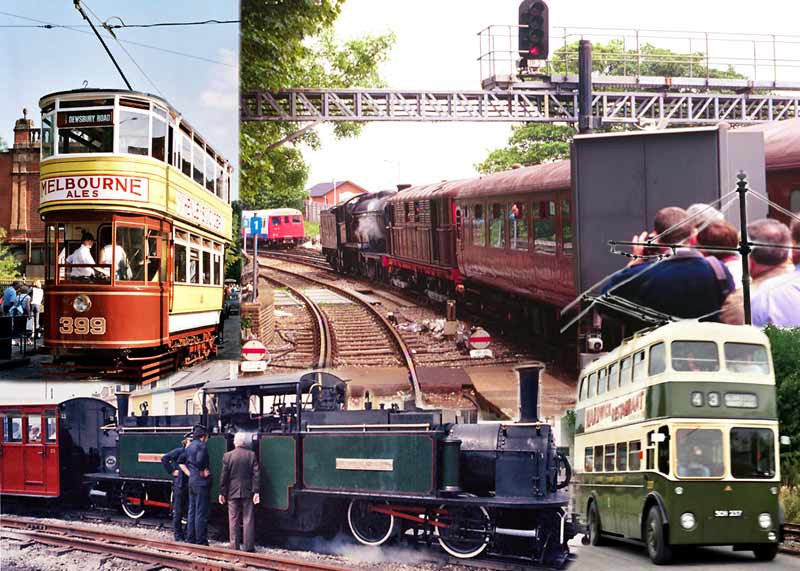More information about this website & why it was created can be found by visiting this website's "front" pages (link opens in a new window)
A couple of pages looking at how public transports can become more than
just a mere means of getting from a to b.
Nostalgia is very popular concept in our society. People are always looking back, as if they are trying to recall some sort of golden era when life was believed to have been better, even though for the vast majority of people this was not so. (The only possible exception to this is with food, as in ye olde days it was not adulterated with harmful chemicals or had its genetic composition dangerously compromised as is frequently the situation today)..
For some people Nostalgia overlaps into Heritage, much in the same way that we often look back to (for instance) Roman times to see how people lived and how that era contributed towards creating the society in which we live today.
Leisure is about enjoyment, rest, relaxation, recuperation and hobbies. Often this involves transport - perhaps to travel to and through beautiful scenery which we enjoy seeing or to visit an exhibition, zoo, historic home, garden festival (etc.,) where - on larger sites - the transport sometimes also performs a useful service linking the various attractions and saving the visitors from long walks.
Here in the British Isles we have many privately owned leisure themed railways. Most of them reuse former British Railways lines which had been closed but there are also some narrow gauge railways that follow alignments which were never part of the national railway network. We also have some leisure-themed visitor attractions which feature trams (and / or trolleybuses) instead of trains. Many of the narrow gauge railways were originally built to carry freight but now live-on by providing leisure-orientated rides to tourists - usually with the trains being hauled by steam locomotives, although some also use diesel traction. Some of these lines also provide services which meet the real transport needs of their local communities. Often they will use diesel (and not steam) traction on these services as diesel traction is considerably cheaper and less labour intensive to operate. This combination of local community and tourist operations points towards ways in which the leisure industry can generate income which both benefits the local economy and helps to keep the transport system financially viable. A British narrow gauge miniature railway which right from when it opened (in 1927) was built to carry passengers is the Romney, Hythe and Dymchurch Railway (RH&DR). This line was built to serve a coastal location which is very popular with tourists, but it also operates trains taking local children to school - so instead of the more usual school bus there is the school train! |
The RH&DR have a website at http://www.rhdr.org.uk ![]()
This page at the Wikipedia encyclopædia may also be of interest.
http://en.wikipedia.org/wiki/Romney%2C_Hythe_and_Dymchurch_Railway ![]()

 |
|||||||||||||||||||||||||||||||||||||||||||||||||||||
 |
|||||||||||||||||||||||||||||||||||||||||||||||||||||
 |
|||||||||||||||||||||||||||||||||||||||||||||||||||||
 |
|||||||||||||||||||||||||||||||||||||||||||||||||||||
 |
|||||||||||||||||||||||||||||||||||||||||||||||||||||